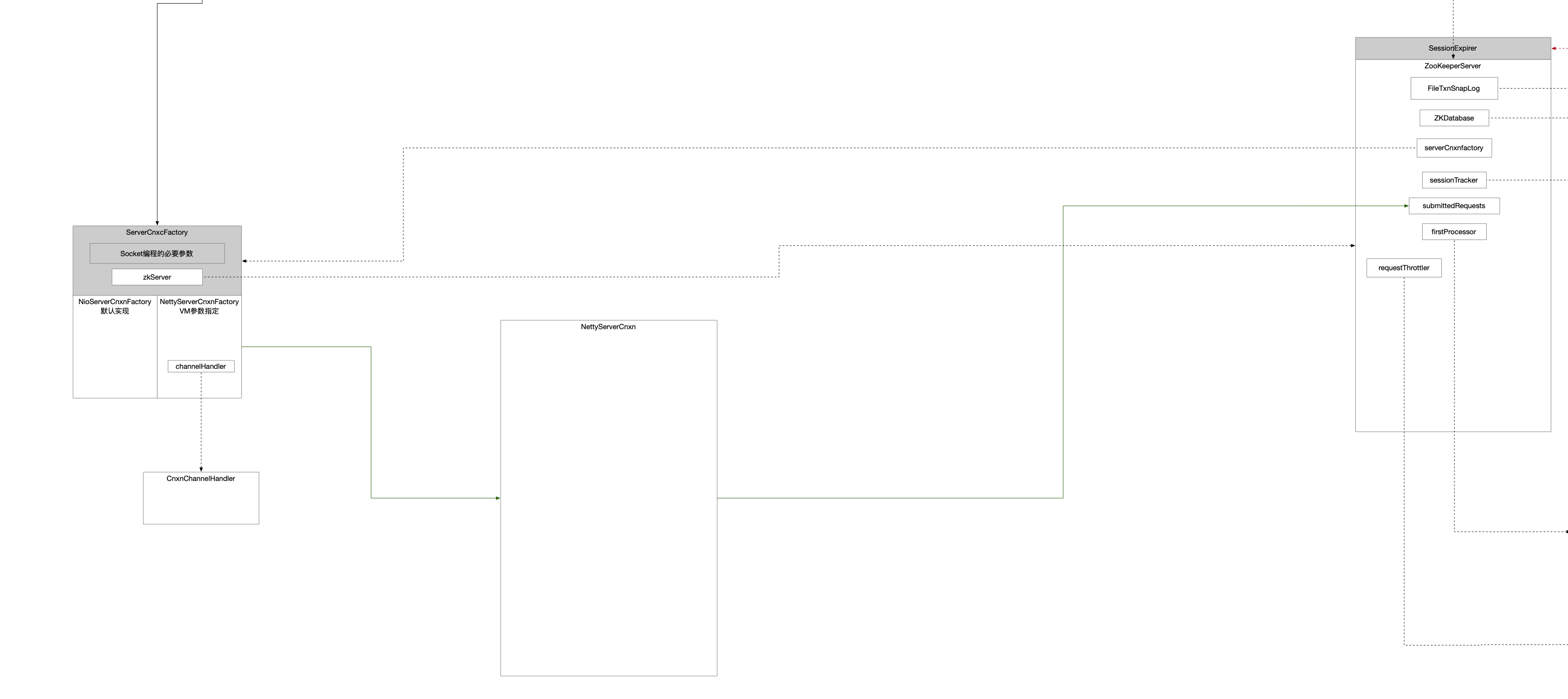1
2
3
4
5
6
7
8
9
10
11
12
13
14
15
16
17
18
19
20
21
22
23
24
25
26
27
28
29
30
31
32
33
34
35
36
37
38
39
40
41
42
43
44
45
46
47
48
49
50
51
52
53
54
55
56
57
58
59
60
61
62
63
64
65
66
67
68
69
70
71
72
73
74
75
76
77
78
79
80
81
82
83
84
85
86
87
88
89
90
91
| public void processPacket(ServerCnxn cnxn, ByteBuffer incomingBuffer) throws IOException {
InputStream bais = new ByteBufferInputStream(incomingBuffer);
BinaryInputArchive bia = BinaryInputArchive.getArchive(bais);
RequestHeader h = new RequestHeader();
h.deserialize(bia, "header");
cnxn.incrOutstandingAndCheckThrottle(h);
incomingBuffer = incomingBuffer.slice();
if (h.getType() == OpCode.auth) {
LOG.info("got auth packet {}", cnxn.getRemoteSocketAddress());
AuthPacket authPacket = new AuthPacket();
ByteBufferInputStream.byteBuffer2Record(incomingBuffer, authPacket);
String scheme = authPacket.getScheme();
ServerAuthenticationProvider ap = ProviderRegistry.getServerProvider(scheme);
Code authReturn = KeeperException.Code.AUTHFAILED;
if (ap != null) {
try {
authReturn = ap.handleAuthentication(
new ServerAuthenticationProvider.ServerObjs(this, cnxn),
authPacket.getAuth());
} catch (RuntimeException e) {
LOG.warn("Caught runtime exception from AuthenticationProvider: {}", scheme, e);
authReturn = KeeperException.Code.AUTHFAILED;
}
}
if (authReturn == KeeperException.Code.OK) {
LOG.info("Session 0x{}: auth success for scheme {} and address {}",
Long.toHexString(cnxn.getSessionId()), scheme,
cnxn.getRemoteSocketAddress());
ReplyHeader rh = new ReplyHeader(h.getXid(), 0, KeeperException.Code.OK.intValue());
cnxn.sendResponse(rh, null, null);
} else {
if (ap == null) {
LOG.warn(
"No authentication provider for scheme: {} has {}",
scheme,
ProviderRegistry.listProviders());
} else {
LOG.warn("Authentication failed for scheme: {}", scheme);
}
ReplyHeader rh = new ReplyHeader(h.getXid(), 0, KeeperException.Code.AUTHFAILED.intValue());
cnxn.sendResponse(rh, null, null);
cnxn.sendBuffer(ServerCnxnFactory.closeConn);
cnxn.disableRecv();
}
return;
} else if (h.getType() == OpCode.sasl) {
processSasl(incomingBuffer, cnxn, h);
} else {
if (!authHelper.enforceAuthentication(cnxn, h.getXid())) {
return;
} else {
Request si = new Request(cnxn, cnxn.getSessionId(), h.getXid(), h.getType(), incomingBuffer, cnxn.getAuthInfo());
int length = incomingBuffer.limit();
if (isLargeRequest(length)) {
checkRequestSizeWhenMessageReceived(length);
si.setLargeRequestSize(length);
}
si.setOwner(ServerCnxn.me);
submitRequest(si);
}
}
}
|

